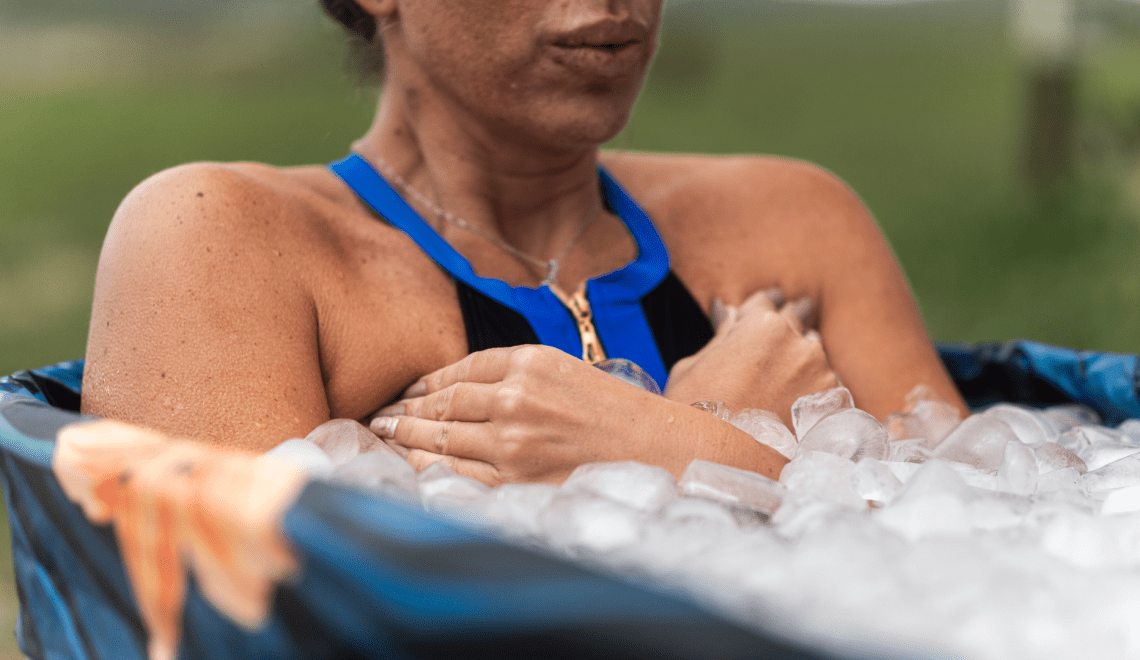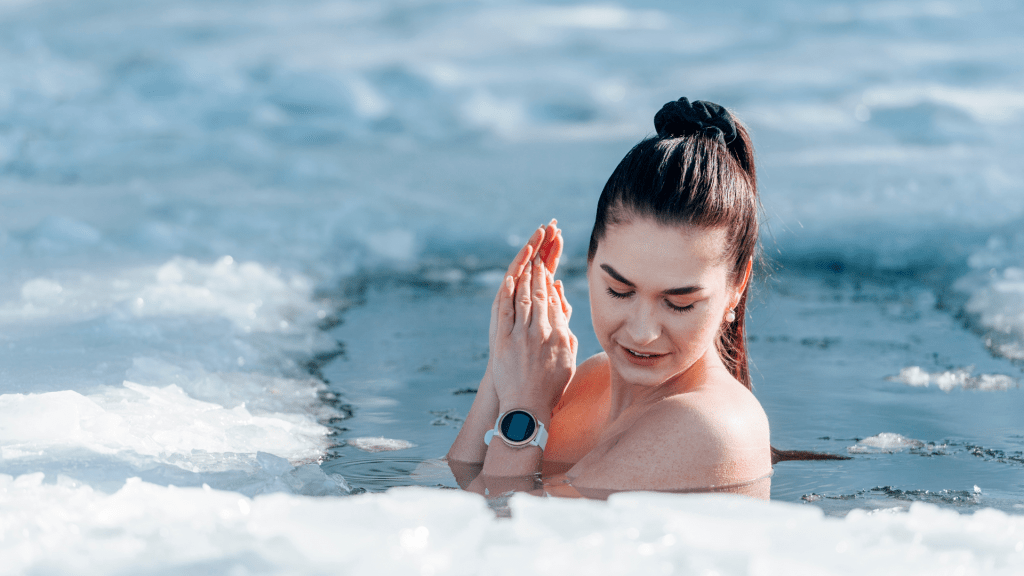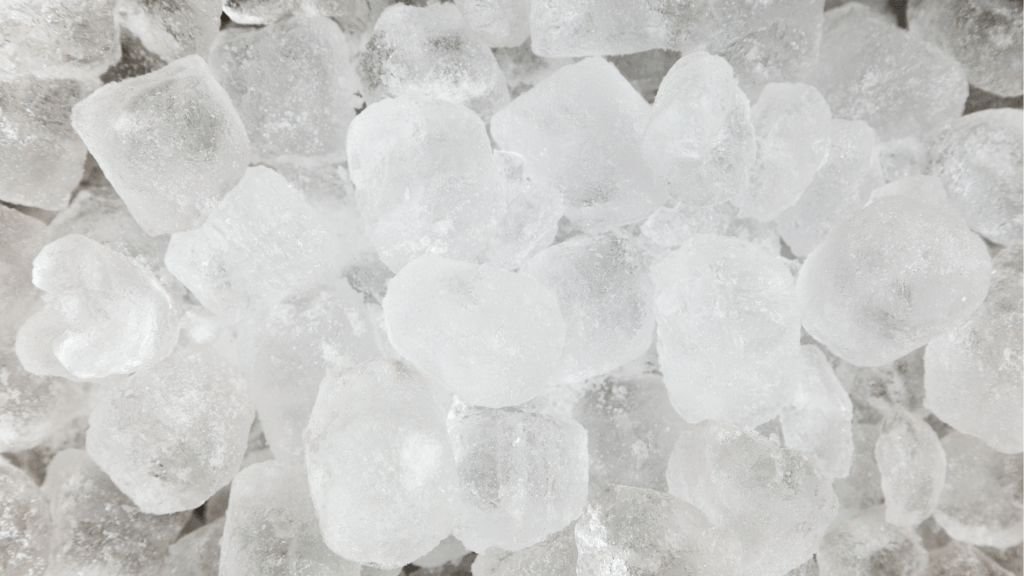
Do ice baths really help your body? Top athletes definitely think they do. Tennis champion Andy Murray takes eight-minute plunges in 8-10°C iced water after his matches. Olympic gold medalist Jessica Ennis-Hill has made this chilling recovery technique part of her training routine too.
The science behind ice baths tells a complex story, despite their popularity. Studies comparing ice baths to light cool-down exercises found no real difference in inflammation markers. These cold plunges could help quick recovery between events, but they might not serve athletes looking to build long-term strength.
Let’s take a closer look at what science reveals about ice baths. This piece will help you learn about their impact on your fitness goals and show you the best ways to use them—if they fit your needs at all.
What Are Ice Baths and How Do They Work?
Ice baths have become incredibly popular, and many people wonder what they are and how they affect the body. Cold water immersion (CWI) or cryotherapy involves submerging your body in very cold water for a short time, which creates a cascade of physiological responses.
Typical temperature and duration
Ice bath temperatures work best between 50-59°F (10-15°C). Beginners should start at or slightly above 60°F and work their way toward colder temperatures as their body adapts. Experienced cold plungers often choose temperatures between 40-50°F (4-10°C).
Most experts suggest keeping ice baths under 10-15 minutes. This time allows your body to get the benefits without risking hypothermia or other cold-related injuries. New users should begin with brief 30-60 second sessions and gradually increase their time as their tolerance improves.
Physiological effects of cold exposure
Your body changes immediately when you enter cold water. The “cold shock response” activates within seconds, making your blood vessels constrict (vasoconstriction) and triggering stress hormones. Your breathing quickens, heart rate speeds up, and blood pressure rises. A newer study, published in, showed that heart rate increased by a lot within 30 seconds of cold water immersion.
Blood vessels near your skin narrow as your body tries to keep heat by pushing blood from your extremities to your core. Water pressure (hydrostatic pressure) squeezes your body inward and upward. The pressure gradient increases by 74 millimeters of mercury for every 1-meter of immersion—almost matching typical diastolic blood pressure.
Your blood vessels expand (vasodilation) after you leave the ice bath, which pumps oxygen and nutrient-rich blood back to your tissues and muscles. This process helps reduce inflammation that causes pain and muscle soreness. The alternating constriction and expansion of blood vessels creates a “pumping” effect that researchers believe helps remove exercise-related metabolic waste products.
What Are the Benefits of Ice Baths?
Science has discovered many ways ice baths can benefit our bodies. Athletes everywhere praise cold water immersion (CWI) and with good reason too—research continues to support several key benefits.
Reduced muscle soreness
Ice baths are proven to decrease delayed-onset muscle soreness (DOMS). A complete review found that CWI reduced muscle soreness by a lot right after exercise. The body’s response explains why this happens: cold exposure cuts down acetylcholine production, which slows neuronal transmission rates and helps prevent muscle spasms. The skin temperature’s drop by 10-13°C slows nerve conduction velocity by 10-33%, which creates a natural pain-relieving effect.
Decreased swelling and inflammation
Blood vessels constrict from cold water immersion due to hydrostatic pressure, which pushes more blood back to the heart. This response reduces swelling and speeds up the removal of metabolic waste. Cold temperatures not only narrow blood vessels but also decrease lymphatic and capillary permeability. This limits fluid spread that leads to exercise-induced inflammation. A 2022 study showed that CWI lowers creatine kinase (CK) levels 24 hours after exercise and lactate levels at both 24 and 48 hours, showing reduced muscle damage.
Faster recovery between events
Ice baths prove most valuable in competitive situations that need quick recovery. Research shows they work best during tournaments, athletic meets, and multi-day competitions. Taking an ice bath helps muscles recover faster between events and reduces fatigue after intense workouts. Studies reveal that CWI sessions under 30 minutes improved endurance athletes’ performance, but only when the next session happened within an hour. The benefits extend to better strength recovery up to 40 minutes after exercise and improved fatigue resistance in the 1-6 hours after initial exertion.
Current evidence suggests ice baths work best for quick recovery rather than long-term muscle adaptation.
When Ice Baths Might Not Be Good for You
Ice baths might help with recovery, but they’re not right for everyone or every training goal. The latest research reveals several key limitations that might make you think twice about jumping into that post-workout cold plunge.
What it all means for muscle growth
Ice baths are popular for recovery, but they might actually work against your muscle-building goals. Studies show that regular cold water immersion after strength training substantially reduces your long-term gains in muscle mass and strength. A revealing study found that muscle mass grew by 309g in the active recovery group, while the cold water immersion group gained only 103g.
The science behind this is clear. Ice baths suppress important proteins that your muscles need to grow. Research shows cold exposure drops the phosphorylation of p70S6 kinase—a crucial protein for muscle synthesis—by 60-90% compared to active recovery. On top of that, it slows down the activation of satellite cells your muscles need for repair and growth for up to 48 hours after exercise.
Mixed messages from scientific studies
The research on ice baths paints a complex picture. A newer study, published in 2022, looked at 20 studies from 2002-2022 and found researchers disagreeing about whether cold water immersion helps or hurts.
Many studies have weak spots in their methods, like small test groups and different protocols. To cite an instance, some research suggests ice baths help with pain, while other studies show they work no better than a simple warm-down stretch. There’s another reason to be skeptical – research shows cold water immersion offers no real advantage over active recovery at 24 or 48 hours after exercise.
How age changes everything
Your body’s response to ice baths might depend on your age. Research shows older people experience about one-third less skin blood flow than younger folks during cold water immersion.
Age brings many physical changes that affect how we handle cold. These changes include a reduced ability to keep body heat through skin vessel constriction, less tissue insulation, and weaker shivering responses. Older adults’ blood vessels also respond differently to stress hormones like norepinephrine compared to younger people.
You should think about your fitness goals and health situation carefully before adding ice baths to your routine.
How to Use Ice Baths Safely and Effectively
The right approach makes all the difference between helpful recovery and potential harm when you try ice baths. You need to understand the right timing, technique, and safety measures to get the best results while staying safe.
Best timing after workouts
Your specific goals determine when you should take an ice bath. Taking a plunge immediately after exercise works best to recover quickly between events or competitions. This reduces swelling and tissue breakdown through vasoconstriction. But if you want to build muscle, wait 24-48 hours after strength training. Your body needs time to complete its natural inflammatory processes that help muscle development.
Most experts recommend 10–15 minutes in an ice bath. Beginners should start with 3–5 minutes and slowly build up their tolerance. The water temperature should stay between 50–59°F (10–15°C), which is easiest to maintain with a reliable water chiller for ice bath.
Alternatives like active recovery
Recent studies show that active recovery might work better than ice baths in some cases. Research from Queensland University of Technology found that people who did active recovery (like gentle cycling) after exercise built more strength and muscle mass than those who used ice baths.
Active recovery helps reduce exercise swelling and increases blood flow throughout the body. It can boost the metabolism of exercise byproducts. You get benefits similar to water immersion without spending extra energy.
Who should avoid ice baths
Ice baths aren’t safe for everyone. Medical experts say you should skip them if you have:
- Heart conditions or cardiovascular issues
- Diabetes
- High blood pressure
- Peripheral vascular disease
- Raynaud’s phenomenon
- Cold allergies or hypersensitivity
- Peripheral neuropathy
Safety comes first – never do an ice bath alone, especially as a beginner. The cold shock response can be dangerous and triggers rapid increases in breathing, heart rate, and blood pressure within seconds. Talk to your doctor before starting any cold water immersion routine, especially if you take medications that affect blood pressure or heart rate.
Conclusion
Research paints an interesting picture of ice baths that goes beyond simple yes-or-no answers. Studies definitely show they help reduce muscle soreness and speed up recovery between competitions. Athletes who want to build muscle might want to think twice about taking cold plunges after their strength workouts. The mixed evidence shows we should be smart about using ice baths instead of following them blindly.
Everyone’s body reacts differently to cold based on their age, fitness and physical makeup. Testing what works for you under expert guidance makes more sense than following general advice. Ice baths can have powerful effects on your body when you use them right, but you must respect their downsides. This balanced way of looking at ice baths will help you make smart choices about using them while avoiding any negative effects on your training goals.









